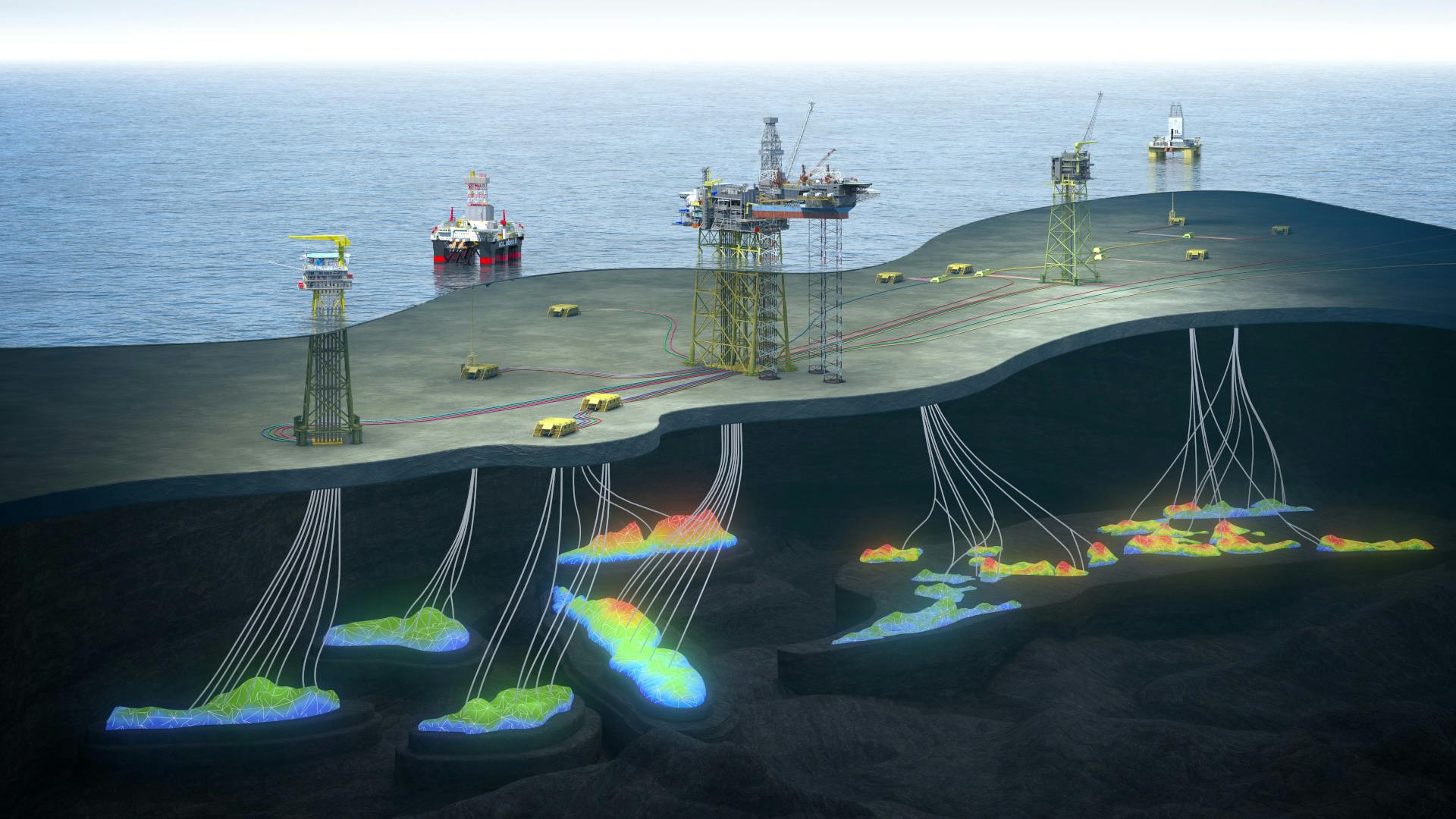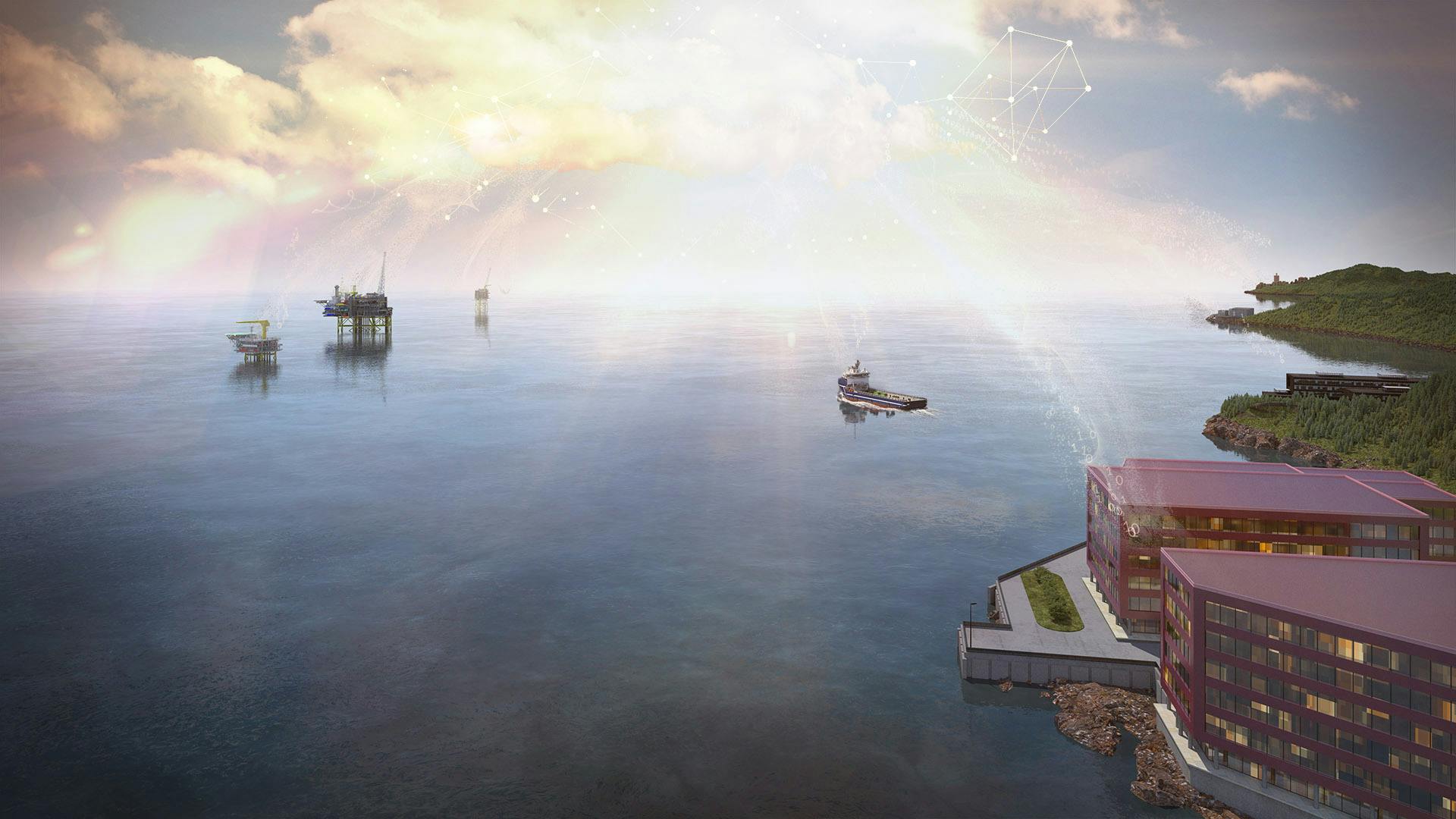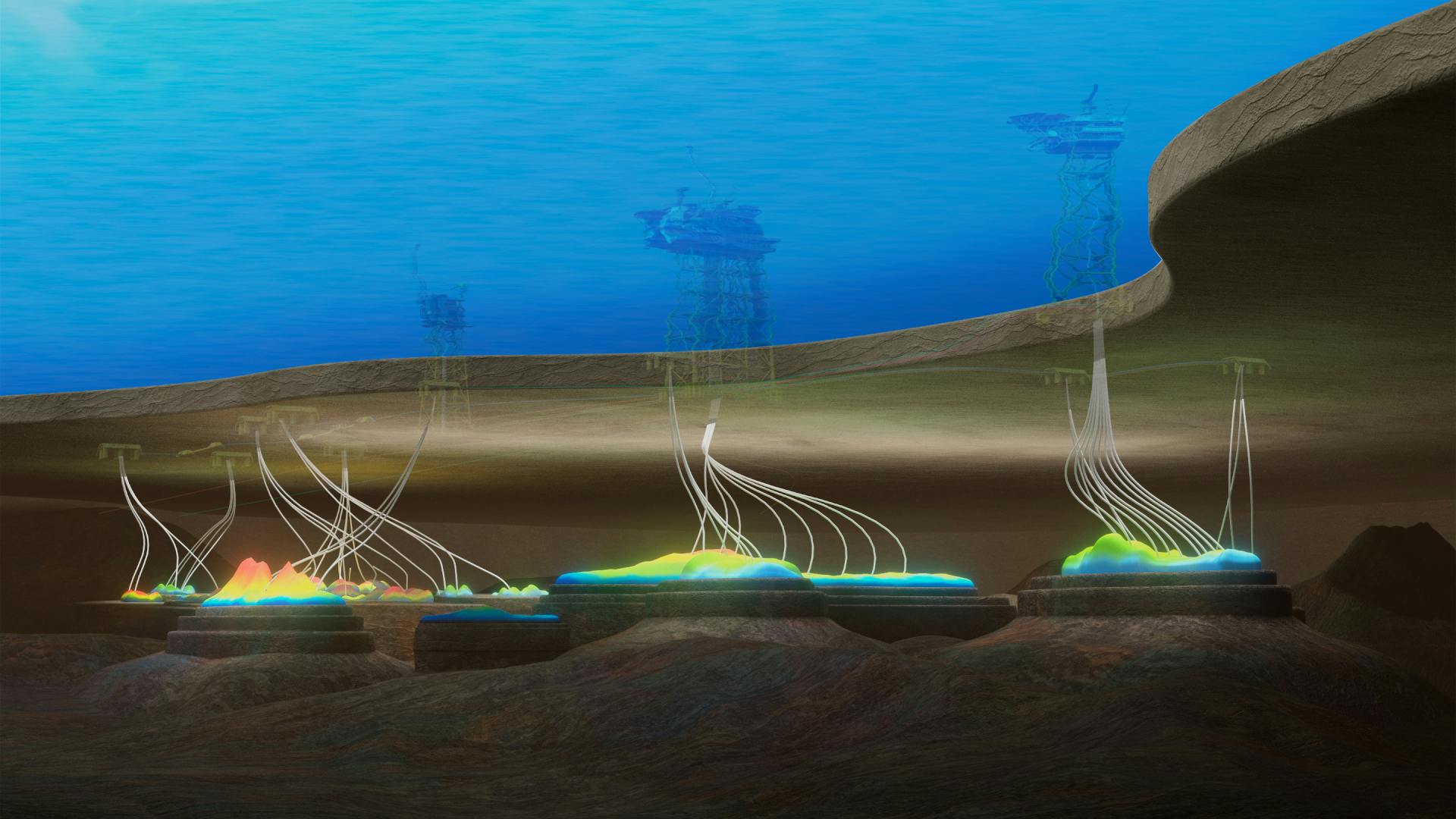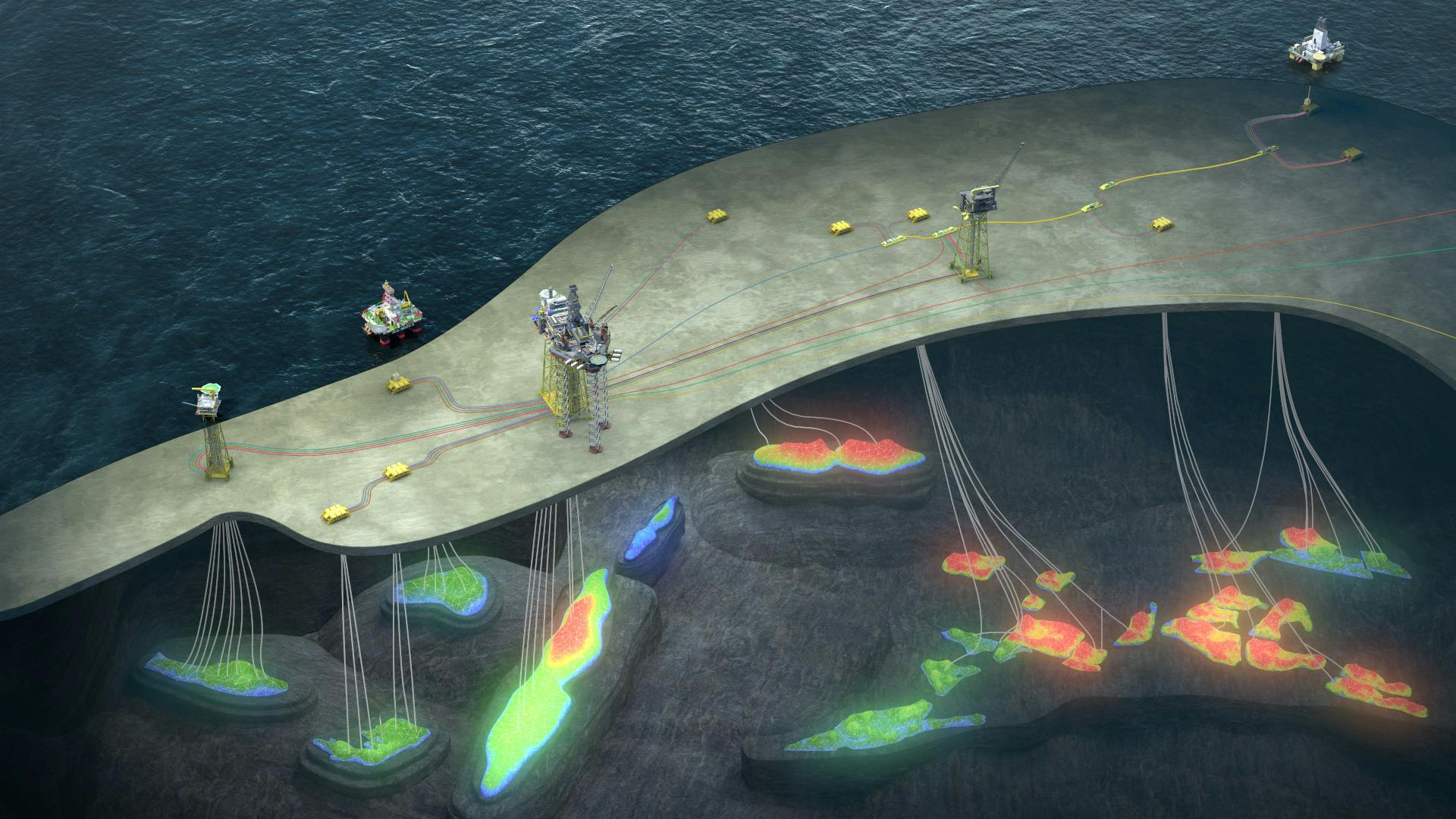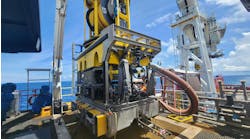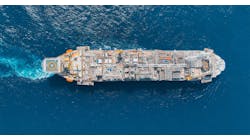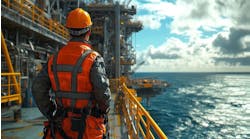Editor's note: A condensed version of this Executive Q&A article first appeared in the 2024 Remote Inspections & Operations Special Report, which published within the January/February 2024 issue of Offshore magazine.
By Jeremy Beckman, Editor, Europe
Yggdrasil in the Central North Sea is one of Norway’s most extensive and ambitious development projects to date, encompassing multiple fields across three license groups and with an estimated cost of NOK11.5 billion. Prior to the final investment decision in late 2022, Aker BP and Equinor operated the licenses, but the two Norwegian majors had been collaborating for some time on a coordinated, area-wide development. On submission of the plan for development and operation, Aker BP took over as operator of the entire area for both the development and operations phase to ensure efficient and streamlined execution of the project.
Construction started late last year at various fabrication yards in Norway and across the world. A notable feature of the platforms, wells and subsea facilities will be the emphasis on remote operations to a level not previously attempted on the Norwegian Continental Shelf. Offshore spoke to Lars Hoier, Aker BP's senior vice president of Yggdrasil, about how the company and its partners plan to implement this philosophy and the associated technological solutions.
Offshore: Was the decision to go for a fully remote controlled/digitalized development from the outset governed by the complexity of tying in production from fields in different areas through the three platforms/pipeline system?
Høier: Aker BP’s ambition is to be the oil and gas company of the future. A key strategic priority is to lead the transformation of oil and gas through alliances, digitalization and future operations. Yggdrasil is a locomotive, with project delivery through strategic partnerships, smarter ways of working and through setting a new standard in both project execution and operations.
Yggdrasil is a complex development. It stretches approximately 60 km [37 miles] from north to south and has nine fields, all with different characteristics. The operating strategy is based on remote operations, periodically unmanned and unmanned installations, and digital design. This is to drive efficiency, lower operating cost, lower GHG emissions and ensure maximum value creation from the area.
Aker BP, Equinor and PGNiG Upstream Norway (formerly LOTOS) agreed to a coordinated development of the licenses in the Yggdrasil area in June 2020. The license partners already then shared the ambition to develop the area with a minimal carbon footprint and state-of-the-art technological solutions. When the concept was selected the year after, remote operations were part of the design for both Aker BP and Equinor.
In December 2022, Aker BP took over as the operator for the full area. The companies agreed that one operator gave a good basis for efficient project execution and for safe and efficient operation, creating stronger synergies between the two developments and fewer interfaces. Aker BP is now delivering on the Munin concept developed by Equinor. One of the key synergies from transferring the operatorship to Aker BP is one central control room onshore instead of two. The Yggdrasil control room will be part of Aker BP’s new Integrated Operations Center in Stavanger, currently under construction.
Offshore: As partners, do Aker BP and Equinor bring different capabilities in remote operations?
Høier: Aker BP has several normally unmanned installations in the Ula and Valhall area in the southern Norwegian North Sea. The company has also gained experience with operating a manned installation from shore, with the central control room from Ivar Aasen farther north located in Trondheim. Equinor has extensive experience in remote operation as well. Equinor has worked closely with Aker BP over many years to maximize the value creation from the Yggdrasil area, and experience transfer is a natural part of the license cooperation.
Offshore: Can you explain what Aker BP is looking to achieve via its partnership with various solutions providers for the Yggdrasil digital twin 'ecosystem'?
Høier: The partnership with Aker BP, Aker Solutions, Cognite and Aize has two purposes. The first is to develop work processes, applications and software, increasing efficiency in project execution and reducing the number of engineering hours. Aker Solutions provides data to the Cognite Data Fusion platform. Aize builds applications to make the data available to end users.
A digital twin for the Aker Solutions’ EPC phase has been developed. Several applications have also been rolled out in Yggdrasil. One application, Project Execution Control, gives real-time status of the engineering and construction progress of structures and sections of Hugin A. Another tool, Visual Construction Planning, visualizes the construction method and sequence of Hugin A for users involved in the construction of the topsides. The partnership also has an application for smarter collaboration with other vendors contributing to the project.
Secondly, the partnership provides important data to the Yggdrasil digital platform. The Yggdrasil data platform is the foundation for the digital version of Yggdrasil. This will be central in fulfilling the operating strategy of the area. Both Aize and Cognite offer SaaS services for their technology deliveries, and Microsoft Azure Data Factory plays an important role in transferring data between the digital platform and the applications through data pipelines, connected through standardized APIs, built by standard Microsoft cloud components.
Offshore: Can you provide more detail on the functions of the integrated operations center?
Høier: Yggdrasil’s Integrated Operations Center (IOC) in Stavanger is part of Aker BP’s new office facilities under construction in the city. The IOC will consist of the central control room to operate the Yggdrasil area and a center to support the operation. Hugin A, Hugin B, Munin, subsea and power-from-shore stations will be operated from Stavanger. The IOC will facilitate efficient cooperation and enable seamless collaboration between the offshore and onshore organization. The control room technicians will work closely with the production and process engineers. From the IOC, Aker BP will perform extensive monitoring of all equipment and conduct analysis to ensure safe, reliable and efficient operation. Other Aker BP operated assets will also have dedicated spaces in the IOC.
Offshore: MAN will incorporate a digital solution for the HOFIM compressors it is manufacturing for Hugin A and Munin. Will its remote operations capability be an advance on what the company engineered for the subsea compressors at Equinor’s Åsgard gas-condensate project in the Norwegian Sea?
Høier: The operations strategy for Yggdrasil, with unmanned installations and remote operations, requires equipment offshore with maximized performance and uptime to reduce the need for traditional offshore maintenance and service. Aker BP is now working very closely with MAN to plan for seamless operation of the compressors through the lifetime of the equipment.
Offshore: Aker BP claims its Ivar Aasen platform in the North Sea was the first manned offshore installation in Norway to be operated remotely from a control room, in this case at Trondheim. What lessons has the company learned to build on this capability for Yggdrasil?
Høier: The Ivar Aasen control room has given us confidence that we can operate facilities from onshore in a safe and efficient manner. The company is transferring that experience to Yggdrasil to exploit synergies via the co-location of the central control room and the IOC. At Yggdrasil, the operations team will strengthen the cooperation between the production simulation and optimization community with the control room to gain a more proactive production optimization focus.
Siemens Energy will deliver the electrical, instrumentation, controls and telecommunications (EICT) systems for Hugin A, Hugin B and Munin. The Yggdrasil control system is an important enabler for achieving our operation strategy. The control system is conventional, but we will utilize application embedded in the solution. Yggdrasil will have additional surveillance compared to traditional setup and a higher degree of actuated and remotely controlled solutions to enable management of the facilities without personnel in field.
Offshore: OneSubsea is supplying its Vectus 6.0 subsea control modules for the subsea production system. What are the benefits in terms of the remote operations capabilities?
Høier: Yggdrasil is the largest subsea project development ever on the Norwegian Continental Shelf, featuring nine identical six-slot templates, 38 xmas trees, over 400 km of in-field pipelines and almost 100 km of umbilicals. We have designed the area with state-of-the-art instruments placed to let us know and control process conditions at all times. We will combine feedback from pressure sensors, temperature sensors, multiphase flowmeters and acoustic devices to maintain equipment within a safe operating envelope, and to optimize production from the different reservoirs.
The latest generation of subsea control modules will allow us to process a huge amount of information both quickly and reliably. The equipment will be operated from the onshore control center using automated sequences for operations like startup and shutdown. By combining information from downhole and subsea systems into the digital twin ecosystem, Aker BP aims to make sure that Yggdrasil is not only the largest, but also the most advanced subsea development to date.
Offshore: Are there any other innovations in this project in terms of remote inspection technology for the overall subsea network?
Høier: Yggdrasil’s subsea facilities have been designed with a focus on inherent safety, minimizing the need for maintenance and inspection. Inspections and interventions will still be needed occasionally. We have designed equipment so that it is easy to inspect and with recoverable modules that can be changed out without undermining production efficiency. Aker BP and its partners regard themselves as at the forefront of developing energy and cost-efficient inspection, survey and intervention solutions. We will look to use low energy and unmanned systems for subsea inspection in the future, using emerging technology like autonomous vehicles, drones and micro ROVs. We have included communications hubs throughout the Yggdrasil subsea development to help advanced robotics to navigate, work and communicate autonomously without the need for traditional pilots. This will help us achieve industry-leading standards of condition and integrity management, while still being cost effective.
Offshore: Palfinger Marine is supplying remotely operated cranes. Is this a new development?
Høier: Aker BP has entered into a strategic partnership with Palfinger Marine and Optilift for the development of remotely controlled and autonomous cranes for both Yggdrasil and the Valhall PWP-Fenris development project. Through the cooperation, Aker BP is changing the way equipment is transported to or offshore installations. The ability to remotely control cranes from shore is a first step, followed by innovations to load and offload equipment without manual intervention. Under the umbrella of this strategic partnership, Palfinger and Optilift will collaborate to co-develop and integrate Optilift's advanced technology into the control systems of offshore cranes.
This collaboration will continue through the technology qualification process until the product is market-ready, coinciding with the commencement of production at Aker BP installations in 2027. In total, Palfinger is delivering seven cranes to the Yggdrasil and Valhall PWP-Fenris developments, five of which will be fully remote operated from the IOC in Stavanger, Norway. The first cranes are to be delivered in 2025. The offshore commissioning of the remote operation of the cranes will take place between 2026 and 2028.
Offshore: One of the company’s declared aims to is to reduce CO2 emissions intensity from the project. How can remote operations help you achieve this goal?
Høier: The main contributor to low emissions from Yggdrasil is power from shore. The concept will ensure a stable and secure power supply to the area, with an emissions intensity of around 1 kg CO2/boe. Aker BP has established a clear plan to achieve net zero emissions across all its operations in Norway by 2030. In addition to electrification, the company is working continuously to minimize emissions through more efficient use of energy on fields. Yggdrasil is no exception, and the operating strategy with remote operations, digital solutions and low manning will contribute to lower GHG emissions from higher uptime and reduced logistics.


